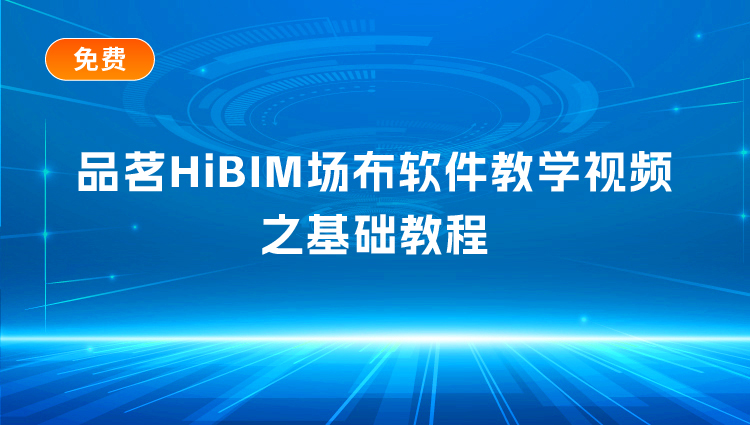* 主體類型
* 企業(yè)名稱
* 信用代碼
* 所在行業(yè)
* 企業(yè)規(guī)模
* 所在職位
* 姓名
* 所在行業(yè)
* 學(xué)歷
* 工作性質(zhì)
請(qǐng)先選擇行業(yè)
您還可以選擇以下福利:
行業(yè)福利,領(lǐng)完即止!

下載app免費(fèi)領(lǐng)取會(huì)員



Tokyo Station, Tokyo Japan. Image © 江戸村のとくぞう via Wikipedia under license CC BY-SA 4.0
不僅僅是車站:東亞以公共交通為導(dǎo)向的發(fā)展演變
Not Just a Train Stop: The Evolution of Transit-Oriented Developments in East Asia
由專筑網(wǎng)Zia,小R編譯
以公共交通為導(dǎo)向的發(fā)展(TOD)是一種綜合性城市規(guī)劃戰(zhàn)略,旨在以公共交通樞紐為中心,打造密集、適宜步行、充滿活力的街區(qū)。這種策略將住宅、商業(yè)和娛樂(lè)設(shè)施無(wú)縫整合到公交樞紐附近,可減少對(duì)汽車的依賴,增加公共交通的乘坐率,并刺激當(dāng)?shù)亟?jīng)濟(jì)發(fā)展。政府機(jī)構(gòu)通過(guò)分區(qū)改革、放寬容積率(FARs)、出售使用權(quán)以及促進(jìn)公私合作以確保公共基礎(chǔ)設(shè)施的資金投入,這些政策在支持開(kāi)發(fā)項(xiàng)目方面發(fā)揮著關(guān)鍵作用。TOD已在全球范圍內(nèi)得到推廣,東亞地區(qū)也有著成功的范例,而在紐約市等不同環(huán)境中復(fù)制這些模式,則凸顯了根據(jù)當(dāng)?shù)貤l件、地理特征和社區(qū)需求調(diào)整TOD原則的重要性。
由于人口、基礎(chǔ)設(shè)施和政策等因素的共同作用,東亞的城市環(huán)境為實(shí)施TOD提供了基礎(chǔ)。高人口密度確保了新開(kāi)發(fā)項(xiàng)目擁有穩(wěn)定的公交乘客和人流量,從而使對(duì)公共交通和相關(guān)開(kāi)發(fā)項(xiàng)目的大量投資具有經(jīng)濟(jì)可行性。該地區(qū)對(duì)現(xiàn)代技術(shù)和持續(xù)基礎(chǔ)設(shè)施升級(jí)的承諾,有助于建立可靠、高效的公交系統(tǒng),進(jìn)一步加強(qiáng)公眾對(duì)公交系統(tǒng)的依賴。在香港和新加坡等城市,相關(guān)政策也并不鼓勵(lì)人們擁有私家車:香港對(duì)新車征收的汽車稅通常超過(guò)80%,而新加坡僅擁有一輛汽車就需要超過(guò)7萬(wàn)美元的“擁車書(shū)”(COE)。這些措施使得公共交通成為大多數(shù)居民的實(shí)際選擇。
Transit-Oriented Development (TOD) is a comprehensive urban planning strategy aimed at creating dense, walkable, and vibrant neighborhoods centered around public transportation hubs. By seamlessly integrating residential, commercial, and recreational facilities within close proximity to transit nodes, TODs seek to reduce automobile dependency, increase public transit ridership, and stimulate local economic development. Government agencies play a pivotal role in supporting these developments through zoning reforms, easing floor area ratios (FARs), selling air rights, and facilitating public-private partnerships to secure capital for public infrastructure. While TODs have gained global traction, East Asia boasts some of the most successful examples. Conversely, efforts to replicate these models in different contexts—such as New York City—highlight the importance of adapting TOD principles to local conditions, geographical characteristics, and community needs.
East Asia's urban environments offer fertile ground for TOD implementation due to a confluence of demographic, infrastructural, and policy-driven factors. High population density ensures steady transit ridership and foot traffic for new developments, making significant investments in public transportation and related developments economically viable. The region's commitment to modern technology and continuous infrastructure upgrades contributes to reliable, efficient transit systems, further reinforcing public reliance. In cities like Hong Kong and Singapore, policies also actively discourage private car ownership: Hong Kong imposes automobile taxes for new vehicles typically exceeding 80%, while Singapore requires a Certificate of Entitlement (COE) that can surpass USD 70,000 just to own a car. These measures make public transportation the practical choice for the majority of residents.

Tokyo Station, Tokyo Japan. Image © dconvertini via Wikipedia under license CC BY-SA 2.0
政府在東亞城市發(fā)展模式中的參與不僅僅是提供便利,有關(guān)當(dāng)局往往帶頭對(duì)這些項(xiàng)目進(jìn)行規(guī)劃和融資,以確保與長(zhǎng)期戰(zhàn)略保持一致。集住宅、零售、辦公、酒店和娛樂(lè)功能于一體的多功能開(kāi)發(fā)是這些項(xiàng)目的共同特點(diǎn),它們讓城市在白天和夜晚都保持活躍。氣候因素也起著至關(guān)重要的作用,鑒于這些地區(qū)經(jīng)常出現(xiàn)炎熱潮濕的天氣,交通樞紐發(fā)展區(qū)的設(shè)計(jì)提供了舒適、氣候可控的環(huán)境,有時(shí)甚至采用大規(guī)模持續(xù)空調(diào)等做法。這些樞紐不僅是交通樞紐,還是人們聚集、購(gòu)物和社交的重要社區(qū)空間,從而融入了日常城市生活。
Government involvement in East Asian TODs extends beyond mere facilitation. Authorities often spearhead the planning and financing of these projects to ensure alignment with long-term urban strategies. Mixed-use developments—combining residential, retail, office, hotel, and recreational functions—are a common feature, fostering neighborhoods that remain active throughout the day and night. Climate considerations also play a vital role; given the region's frequent hot and humid weather, TODs are designed to offer comfortable, climate-controlled environments, sometimes at the cost of unsustainable practices such as large-scale continuous air-conditioning. Far from being just transit points, these hubs serve as essential community spaces where people gather, shop, and socialize, thus embedding themselves into the fabric of daily urban life.
香港案例:通過(guò)空間既是基礎(chǔ)設(shè)施也是社交場(chǎng)所
The Case of Hong Kong: Transit as Both Infrastructure and Refuge

Interior of Pacific Place, Hong Kong. Image © Wing1990hk via Wikipedia under license CC BY 3.0
香港的“交通樞紐發(fā)展模式”因其高效率以及交通基礎(chǔ)設(shè)施與商業(yè)和住宅空間的完美結(jié)合而出名。金鐘站、香港站和九龍站等主要交通樞紐已發(fā)展成為充滿活力的多功能樞紐,為乘客和當(dāng)?shù)鼐用裉峁┓?wù)。1982年啟用的金鐘站是這種方式的典范,金鐘站最初是連接多條地鐵線和巴士線路的主要換乘站,后來(lái)發(fā)展成為集多種經(jīng)濟(jì)活動(dòng)和服務(wù)于一體的樞紐。它包括大型購(gòu)物中心、世界級(jí)酒店、現(xiàn)代化辦公樓,以及法院和公園等基本公共設(shè)施。金鐘的不斷發(fā)展鞏固了其作為重要交通樞紐的地位,如今,該區(qū)域擁有超過(guò)四家豪華酒店、服務(wù)式公寓、高端零售空間和大型辦公樓群,其中包括保羅-魯?shù)婪颍≒aul Rudolph)設(shè)計(jì)的辦公樓以及扎哈-哈迪德(Zaha Hadid)最新建造的辦公建筑群,所有這些都與不斷擴(kuò)大的地鐵網(wǎng)絡(luò)相互連接。
除了商業(yè)驅(qū)動(dòng)的城市發(fā)展綜合開(kāi)發(fā)項(xiàng)目外,香港還展示了以住宅為重點(diǎn)、戰(zhàn)略性地靠近交通樞紐的開(kāi)發(fā)成效。1985年竣工的太古城就是很好的例子。太古城毗鄰以其命名的地鐵站,由61座住宅樓組成,共有12500多個(gè)公寓單元。太古城毗鄰公共交通,大大提升了物業(yè)價(jià)值,改善了居民的整體城市生活質(zhì)量,成功彰顯了香港 TOD 戰(zhàn)略的核心原則:營(yíng)造便捷、高密度的生活環(huán)境,優(yōu)先考慮交通便利性、經(jīng)濟(jì)活力和城市的長(zhǎng)期可持續(xù)發(fā)展。
Hong Kong's TOD model is globally renowned for its efficiency and seamless integration of transit infrastructure with commercial and residential spaces. Major transit nodes such as Admiralty, Hong Kong Station, and Kowloon Station have evolved into vibrant, multifunctional hubs that serve both commuters and local residents. Admiralty Station, which opened in 1982, exemplifies this approach. Originally established as a key interchange between multiple subway lines and bus routes, the development encompassed multitude of economic activities and services. It encompasses large-scale shopping malls, world-class hotels, modern office towers, and access to essential public facilities, including courthouses and parks. Admiralty's continual evolution has reinforced its status as a critical transit nexus; today, the area hosts over four luxury hotels, serviced apartments, high-end retail spaces, and extensive office complexes, including one built by Paul Rudolph as well as Zaha Hadid's latest addition, all interconnected with an ever-expanding subway network.
Beyond commercially driven TODs, Hong Kong also demonstrates the effectiveness of residential-focused developments strategically positioned near transit hubs. Tai Koo Shing, completed in 1985, is a notable example. Adjacent to its namesake subway station, the development comprises 61 residential towers with more than 12,500 apartment units. This close proximity to reliable public transportation has significantly enhanced property values and improved the overall quality of urban living for residents. The success of Tai Koo Shing underscores a core principle of Hong Kong's TOD strategy: fostering convenient, high-density living environments that prioritize accessibility, economic vitality, and long-term urban sustainability.

Pacific Place Development, Hong Kong. Image © WiNG via Wikipedia under license CC BY 3.0
香港交通樞紐的顯著特點(diǎn)是其積極的氣候控制,以應(yīng)對(duì)城市的氣候條件。夏季氣溫經(jīng)常超過(guò) 33°C(91°F),濕度接近 90%,有空調(diào)的交通樞紐為乘客提供了必要的緩解。這些室內(nèi)空間成為公共生活的非正式延伸,為人們提供了與朋友聚會(huì)、放松或在候車時(shí)躲避酷暑的場(chǎng)所。在室外公共空間稀缺的城市中,這些樞紐站是重要的公共區(qū)域。
香港在TOD方面的成功,主要得益于香港地下鐵道(MTR)公司首創(chuàng)的“地鐵+地產(chǎn)”模式。地鐵公司利用軌道站點(diǎn)周邊的土地開(kāi)發(fā)權(quán),通過(guò)合作開(kāi)發(fā)或出售物業(yè)項(xiàng)目的使用權(quán),為軌道網(wǎng)絡(luò)的擴(kuò)建和維護(hù)提供資金。這種方式確保了TOD的功能性,并促進(jìn)了密集型多功能社區(qū)的形成。軌道交通基礎(chǔ)設(shè)施與房地產(chǎn)開(kāi)發(fā)之間的協(xié)同作用創(chuàng)造了可持續(xù)發(fā)展、自負(fù)盈虧的城市生態(tài)系統(tǒng),使軌道交通的可達(dá)性、商業(yè)的活力和居住的便利性相互促進(jìn)。
One of the defining features of Hong Kong's TODs is their active climatic control as a response to the city's weather conditions. With summer temperatures often exceeding 33°C (91°F) and humidity levels nearing 90%, air-conditioned transit hubs provide essential relief for commuters. These conditioned indoor spaces become informal extensions of public life, offering places to meet friends, relax, or simply escape the sweltering heat while waiting for a train. These hubs double as vital communal areas in a city with scarce outdoor public space.
Hong Kong's success with TOD is largely driven by the "Rail + Property" model pioneered by the Mass Transit Railway (MTR) Corporation. By leveraging land development rights around transit stations, the MTR finances the expansion and upkeep of its rail network through co-developments or the sale of air rights for property projects. This approach ensures the functionality of TODs and fosters the creation of dense, mixed-use neighborhoods. The synergy between transit infrastructure and real estate development creates a sustainable, self-financing urban ecosystem where transit accessibility, commercial vitality, and residential convenience reinforce one another.

Taikoo Shing Development, 1984, Hong Kong. Image © ken93110 via Wikipedia under license CC BY-SA 3.0
日本案例:連通性、便利性和社區(qū)
日本的TOD以其特別注重連通性和用戶便利性而與眾不同。東京站、新宿站和澀谷站等主要交通樞紐都發(fā)展成為充滿活力的多層面城市中心。東京站是國(guó)家的重要門(mén)戶,它成功地利用了向周邊項(xiàng)目出售開(kāi)發(fā)強(qiáng)度的杠桿作用,從而獲得了資助大規(guī)模修復(fù)和現(xiàn)代化項(xiàng)目所需的資金。這一舉措既振興了其老化的基礎(chǔ)設(shè)施,又增強(qiáng)了其作為中央交通樞紐的作用。新宿站是世界上最繁忙的車站之一,通過(guò)提高容積率(FAR)的分區(qū)激勵(lì)措施吸引了大量私人投資。這一政策使公共設(shè)施、文化場(chǎng)所和商業(yè)企業(yè)得以融入車站建筑群,使其成為充滿活力的城市中心。與此同時(shí),澀谷站將人行道的連通性放在首位,采用多層人行道和循環(huán)路線來(lái)穿梭于建筑密集的周邊環(huán)境,從而為成千上萬(wàn)的日常使用者提供了更多的便利。
The Case of Japan: Connectivity, Convenience, and Community
Japan's TODs are distinguished by their exceptional focus on connectivity and user convenience. Major transportation hubs such as Tokyo, Shinjuku, and Shibuya stations exemplify how transit nodes can evolve into vibrant, multifaceted urban centers. Tokyo Station, a key national gateway, successfully leveraged the sale of its air rights to neighboring developments, generating the capital necessary to fund an extensive rehabilitation and modernization project. This initiative revitalized its aging infrastructure while enhancing its role as a central transportation hub. Shinjuku Station—renowned as one of the world's busiest—attracted significant private investment through zoning incentives that allowed for increased floor area ratios (FAR). This policy enabled the integration of public amenities, cultural venues, and commercial enterprises within the station's complex, transforming it into a dynamic urban nexus. Meanwhile, Shibuya Station prioritizes pedestrian connectivity, employing multi-level walkways and carefully designed circulation routes to navigate its densely built surroundings, thus improving ease of movement for thousands of daily users.

Tokyo Station, Tokyo Japan . Image © Imagepocket via Shutterstock
軌道通勤深植于日本文化中,許多居民經(jīng)常需要長(zhǎng)途跋涉去上班。例如,京都和大阪之間約 55公里的路程,乘坐普通列車(非高速列車)僅需25分鐘,這使得長(zhǎng)途日常通勤既實(shí)用又普遍。這種效率甚至超過(guò)了香港的交通系統(tǒng)。由于這些通勤模式的存在,日本的TOD被設(shè)計(jì)成綜合服務(wù)樞紐,通勤者可以在這里購(gòu)物、用餐和辦事,無(wú)需偏離交通路線。這些車站綜合體已成為重要的社交空間,經(jīng)常成為親朋好友的聚會(huì)場(chǎng)所。廣泛的高速鐵路網(wǎng)進(jìn)一步強(qiáng)化了這一作用,從東京到廣島的行程超過(guò)800公里,乘坐火車只需四個(gè)多小時(shí),無(wú)需耗時(shí)的安檢或冗長(zhǎng)的進(jìn)站手續(xù)。從這個(gè)角度來(lái)看,在美國(guó),時(shí)間相近的旅程,如從紐約到波士頓的火車,行程不到這個(gè)距離的一半,大約只有350公里。這種鮮明的對(duì)比凸顯了日本將地方和長(zhǎng)途鐵路系統(tǒng)完美融合的獨(dú)特之處,使TOD成為日本城市和社會(huì)結(jié)構(gòu)中不可或缺的元素。
Rail commuting is deeply ingrained in Japanese culture, with many residents regularly traveling significant distances for work. For instance, the approximately 55-kilometer journey between Kyoto and Osaka takes a mere 25 minutes on conventional trains (not high-speed trains), making long-distance daily commutes both practical and common. This efficiency surpasses even that of other well-regarded transit systems like Hong Kong. Recognizing these commuting patterns, Japanese TODs are designed as comprehensive service hubs where commuters can shop, dine, and complete errands without deviating from their transit routes. These station complexes have become essential social spaces, frequently serving as meeting points for friends and family. The country's extensive high-speed rail network further reinforces this role. A trip from Tokyo to Hiroshima—spanning over 800 kilometers—takes just over four hours by train without the need for time-consuming security checks or prolonged boarding procedures. To put this in perspective, a similarly timed journey in the United States, such as the train ride from New York to Boston, covers less than half that distance at approximately only 350 kilometers. This stark contrast underscores Japan's exceptional integration of local and long-distance rail systems, positioning TODs as indispensable elements of the nation's urban and social fabric.

Shibuya Station, Tokyo Japan. Image © Shiodome via Wikipedia under license CC BY - SA 4.0
紐約案例研究:當(dāng)TOD的雄心與當(dāng)?shù)噩F(xiàn)實(shí)相遇
紐約市的哈德遜廣場(chǎng)項(xiàng)目是一個(gè)旗艦型的城市發(fā)展綜合體,以7號(hào)地鐵線的延伸段為核心,旨在打造一個(gè)現(xiàn)代化的多功能社區(qū),包括豪華住宅、高檔零售店和寬敞的辦公空間。雖然哈德遜廣場(chǎng)成功吸引了貝萊德(BlackRock)和輝瑞(Pfizer)等大型企業(yè),但其他方面卻表現(xiàn)不佳。住宅銷售落后于最初的預(yù)測(cè),而最初由尼曼-馬庫(kù)斯(Neiman Marcus)主打的高端購(gòu)物中心也因人流量下降而陷入困境,導(dǎo)致零售空間轉(zhuǎn)為辦公用途。
A Case Study in New York: When TOD Ambitions Meet Local Realities
New York City's Hudson Yards project was envisioned as a flagship TOD, anchored by the extension of the No. 7 subway line. The development aimed to create a modern, mixed-use neighborhood featuring luxury residences, upscale retail, and expansive office spaces. While Hudson Yards has primarily succeeded in attracting major corporations such as BlackRock and Pfizer, other aspects have underperformed. Residential sales have lagged behind initial projections, and the high-end shopping mall—anchored initially by Neiman Marcus—has struggled with declining foot traffic, leading to the conversion of several retail spaces into office use.

Hudson Yards Development, New York. Image © Related-Oxford
哈德遜廣場(chǎng)的缺陷凸顯了在TOD規(guī)劃中環(huán)境的重要性。與香港和東京的綜合交通樞紐不同,哈德遜廣場(chǎng)是曼哈頓交通系統(tǒng)的最后一站,而香港和東京的主要城市發(fā)展計(jì)劃則是更大、相互連接的網(wǎng)絡(luò)中的中心節(jié)點(diǎn)。盡管在地理位置上處于中心,但它位于西側(cè)盡端,缺乏東亞成功的TOD所特有的無(wú)縫連接。例如,在香港,從國(guó)際機(jī)場(chǎng)到九龍站只需不到30分鐘的路程,乘客可直接到達(dá)公交樞紐上方的辦公、酒店和住宅綜合區(qū)。這種便利性為端到端的國(guó)際商務(wù)旅行提供了便利,也為該地區(qū)的活力和商業(yè)成功做出了貢獻(xiàn)。相比之下,哈德遜廣場(chǎng)相對(duì)有限的交通連接和缺乏高效的通道,阻礙了其作為真正的綜合交通目的地的吸引力。
The shortcomings of Hudson Yards underscore the importance of contextual sensitivity in TOD planning. Unlike the integrated transit hubs of Hong Kong and Tokyo—where major TODs function as central nodes within a larger, interconnected network—Hudson Yards operates as the last stop of Manhattan's transit system. Despite being geographically central, its location on the west side lacks the seamless connectivity that characterizes successful TODs in East Asia. For example, in Hong Kong, the journey from the international airport to Kowloon Station takes less than 30 minutes, delivering passengers directly into a mixed-use district with offices, hotels, and residential towers above the transit hub. This convenience facilitates door-to-door international business travel and contributes to the area's vibrancy and commercial success. In contrast, Hudson Yards' comparatively limited transit connections and absence of efficient airport access hinder its appeal as a truly integrated transit destination.

Hudson Yards Development, New York. Image © King of Hearts via Wikipedia under license CC BY - SA 4.0
該項(xiàng)目對(duì)奢華體驗(yàn)的關(guān)注也縮小了其用戶群體。東亞TOD通常包含基本服務(wù)、平價(jià)零售和無(wú)障礙公共空間,以吸引廣泛的人口,而哈德遜廣場(chǎng)則強(qiáng)調(diào)高端零售和高檔餐飲,使其與紐約普通市民的關(guān)聯(lián)性降低。這種排他性破壞了城市發(fā)展區(qū)努力促進(jìn)的更廣泛的社區(qū)參與。哈德遜廣場(chǎng)項(xiàng)目說(shuō)明,照搬TOD原則而適應(yīng)當(dāng)?shù)氐某鞘薪Y(jié)構(gòu)、通勤習(xí)慣和社會(huì)經(jīng)濟(jì)多樣性,會(huì)限制項(xiàng)目成為積極、包容的城市中心的潛力。
環(huán)境很重要:從交通樞紐到城市生態(tài)系統(tǒng)
香港和日本以公共交通為導(dǎo)向的開(kāi)發(fā)項(xiàng)目的成功表明,有效的以交通為導(dǎo)向的項(xiàng)目所做的遠(yuǎn)不止是在火車站附近建造建筑物這么簡(jiǎn)單。它們將交通與住宅、商業(yè)和社會(huì)基礎(chǔ)設(shè)施完美地結(jié)合在一起,同時(shí)順應(yīng)當(dāng)?shù)氐臍夂驐l件、文化通勤習(xí)慣和社區(qū)需求。與此相反,哈德遜廣場(chǎng)揭示了當(dāng)高檔建筑優(yōu)先于日常功能,或者開(kāi)發(fā)項(xiàng)目未能嵌入現(xiàn)有城市系統(tǒng)和出行模式時(shí),TOD存在的缺陷。即使在東亞,TOD也并非沒(méi)有缺點(diǎn),超大型開(kāi)發(fā)項(xiàng)目的激增有可能取代當(dāng)?shù)厣鐓^(qū),并以同質(zhì)化的零售環(huán)境和標(biāo)準(zhǔn)化的住宅樓取代豐富的城市結(jié)構(gòu)。這種結(jié)果凸顯了平衡大規(guī)模規(guī)劃與對(duì)現(xiàn)有社區(qū)和文化遺產(chǎn)的敏感性的重要性。
The development's focus on luxury experiences has also narrowed its user base. Whereas East Asian TODs typically incorporate essential services, affordable retail, and accessible public spaces to attract a broad demographic, Hudson Yards emphasizes high-end retail and upscale dining, making it less relevant to everyday New Yorkers. This exclusivity undermines the broader community engagement that TODs strive to foster. Hudson Yards illustrates that the replication of TOD principles without careful adaptation to the local urban fabric, commuter habits, and socioeconomic persity can limit a project's potential to become a positive, inclusive urban hub.
Context Matters: From Transit Nodes to Urban Ecosystems
The success of TODs in Hong Kong and Japan demonstrates that effective transit-oriented developments do far more than simply erecting buildings near train stations. They seamlessly integrate transportation with residential, commercial, and social infrastructure while responding to local climate conditions, cultural commuting habits, and community needs. In contrast, Hudson Yards reveals how TODs have its flaws when architectural spectacle is prioritized over everyday functionality or when developments fail to embed themselves within existing urban systems and ridership patterns. Even in East Asia, TODs are not without shortcomings; mega-development proliferation risks displacing local communities and replacing rich urban fabric with homogenized retail environments and standardized residential towers. Such outcomes highlight the importance of balancing large-scale planning with sensitivity to existing neighborhoods and cultural heritage.

Admiralty Station, Hong Kong. Image © Qwer132477 via Wikipedia under license CC BY- SA 4.0

Admiralty Station Transfer during Peak Hours, Hong Kong. Image © Dimnfan 30 via Wikipedia under license CC BY- SA 4.0
以交通為導(dǎo)向的發(fā)展為建設(shè)可持續(xù)、充滿活力的城市帶來(lái)了巨大希望,但它并不是一個(gè)放之四海而皆準(zhǔn)的解決方案。每個(gè)城市的獨(dú)特條件——人口密度、社會(huì)結(jié)構(gòu)、經(jīng)濟(jì)現(xiàn)實(shí)和文化屬性,決定了TOD項(xiàng)目的設(shè)計(jì)和實(shí)施。TOD不應(yīng)僅僅被視為交通樞紐,而應(yīng)成為城市生態(tài)系統(tǒng)的組成部分,提高生活質(zhì)量,促進(jìn)包容性,并確保多樣化城市社區(qū)的長(zhǎng)期恢復(fù)能力。
Transit-oriented development holds significant promise for fostering sustainable, vibrant cities but is not a one-size-fits-all solution. Each city's unique conditions—population density, governance structures, economic realities, and cultural expectations—must shape the design and implementation of TOD projects. TODs should be considered more than mere transit nodes; they should serve as integral parts of the urban ecosystem, enhancing quality of life, promoting inclusivity, and ensuring long-term resilience for perse urban communities.

Admiralty Station, Hong Kong. Image © Qwer132477 via Wikipedia under license CC BY- SA 4.0

Admiralty Station, Hong Kong. Image © Qwer132477 via Wikipedia under license CC BY- SA 4.0

Public Podium at Pacific Place Development, Hong Kong. Image © CCP2017 via Wikipedia under license CC BY- SA 4.0

Hotels within Pacific Place Development, Hong Kong. Image © Wpcpey via Wikipedia under license CC BY- SA 4.0

Pedestrian Bridge Connection at Pacific Place, Hong Kong. Image © Wing1990hk via Wikipedia under license CC BY 3.0

Public Bathroom within Pacific Place Shopping Mall, Hong Kong. Image © WiNG via Wikipedia under license CC BY 3.0

Tai Koo Shing Residential Development, Hong Kong. Image © WiNG via Wikipedia under license CC BY 3.0

Tokyo Station, Tokyo Japan. Image © MaedaAkihiko via Wikipedia under license CC BY- SA 4.0

Shibuya Station Development, Tokyo Japan. Image © Ibamoto via Wikipedia under license CC BY-SA 4.0

Historical Tokyo Station, Tokyo Japan. Image © 鉄道院東京改良事務(wù)所 via Wikipedia under license Public Domain

Hudson Yards Development, New York. Image © Related-Oxford
本文版權(quán)歸腿腿教學(xué)網(wǎng)及原創(chuàng)作者所有,未經(jīng)授權(quán),謝絕轉(zhuǎn)載。

上一篇:政策新聞 | 審查關(guān)于2023年國(guó)家移交長(zhǎng)江生態(tài)環(huán)境問(wèn)題第八項(xiàng)整改任務(wù)驗(yàn)收銷號(hào)的公示
猜你喜歡

BIM建筑|大灣區(qū)納米科創(chuàng)院廣納院展示中心 / HOT DESIGN熾造設(shè)計(jì)工作室

BIM建筑|雪山下的棲身所:星山月影懸崖民宿 / 萬(wàn)謙集設(shè)計(jì)

BIM建筑|搶先看:2025,全球?qū)⒙涑砷_(kāi)放的42座精彩建筑

BIM建筑|中建西南院新作:成都漂浮公園,一座橋一處園

建筑賞析|繪畫(huà)與建筑:空間視角下の日本藝術(shù)

建筑賞析|打造合肥新地標(biāo):科大訊飛AI總部園區(qū)(一期)
最新課程
推薦專題
- 建筑賞析|又沁杭州心|杭州綠城·潤(rùn)百合
- 建筑賞析|軌道上的城市進(jìn)化論——解碼TOD發(fā)展的多維邏輯與創(chuàng)新路徑
- BIM建筑|扎哈事務(wù)所最新方案:阿聯(lián)酋Oystra綜合開(kāi)發(fā)項(xiàng)目
- BIM建筑|Sagehaus花園辦公樓,熱帶氣候下的“風(fēng)之穹頂” / RAD+ar
- BIM建筑|湯姆·梅恩談《有方日歷2025》,“這是我建筑世界的一部分”
- 建筑賞析|line+限時(shí)裝置新作“清風(fēng)茶館”:以竹為媒,重構(gòu)城市呼吸
- BIM建筑|根植于印度傳統(tǒng)工藝的家,Rehethaan住宅 / MuseLAB
- BIM建筑|地方工作室新作:原型的力量,長(zhǎng)沙后湖藝術(shù)園麥垛空間
- BIM建筑|成都太古里快閃建筑:全竹材“清風(fēng)茶館” / 朱培棟-line+建筑事務(wù)所
- BIM建筑|中建西南院新作:成都市天府新區(qū)法院



































